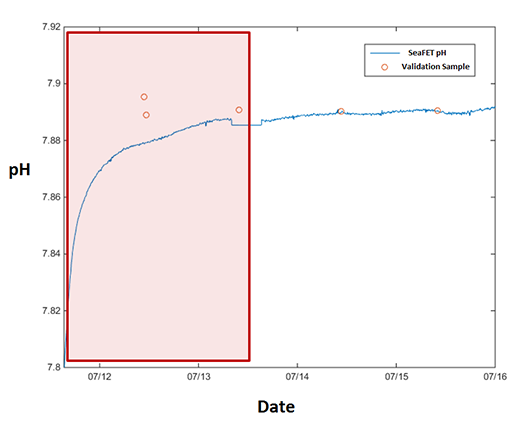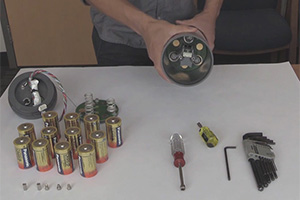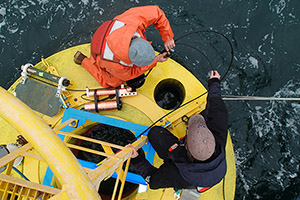- PRODUCTS
- MODEL LIST
- APPLICATIONS
- SUPPORT
- SALES/SERVICE
- BLOG
- ABOUT
July 2019 Newsletter

Classic Tech Tip – Offset pH Data
Take a look at the figure on the left- it contains pH data from a recently calibrated SeaFET sensor deployed in a stable environment. Samples measured by a spectrophotometer are superimposed over the SeaFET data to help validate the sensor’s performance.
At first glance, pH in the highlighted section appears to be unstable and well out of spec. Can you identify what is wrong with this data?
This question was originally published in our June 2018 Newsletter.
Find the Answer

How many pH samples can you fit into a year?
A changing ocean calls for new measurement tools. Keep up to date on the latest changes in ocean pH measurement technology by attending Sea-Bird Scientific’s upcoming webinar on ISFET pH sensors, presented by Senior Chemist Charles Branham, Ph.D., and Field Scientist Greg Ikeda.
Learn More

Recording of Live ISFET pH Webinar
On July 18th, Sea-Bird Scientific hosted a live webinar outlining how our latest line of pH sensors can facilitate new Ocean Acidification studies. Senior Chemist Dr. Charlie Branham presented on applications and theory behind ISFET pH sensors, and previous Technical Support Technician Greg Ikeda presented on best practices for handling our ISFET pH product line.
In case you missed it, we’ve uploaded a recording of the webinar to our website.
Watch Video

